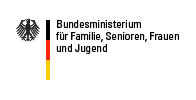Process organisation
Process organization
Process organization involves the design of work processes. It involves organizing the way work is broken down in terms of content and space as well as the order in which it is carried out in time and the use of funds and materials. This process design is the foremost task in modern organizational development because it is essentially here that the outcome of the work process is determined.
Changing processes in the form, for example, of Business Process Reengineering has been vital in administrative modernization. The changed work organization not only produces gains in efficiency for the organization, but it can also have negative consequences for staff. It may result in “redundancies” or in extension of the range of duties without a concomitant extension in authority. This is frequently associated with a feeling of overload, as new routines for action have to be developed parallel to the work process. Negative effects are mostly felt especially at clerical level, where many women work.
Process optimization often results in the creation of jobs with low scope for independent action (support division) which are then mostly allocated to women. These jobs offer little scope for further qualification and promotion. Women may furthermore, because of gender stereotyping, not be adequately involved in the development of new information technology networks. This results in hardening of gender-specific discrimination and insufficient consideration in knowledge management of the informal knowledge existing in functional areas in which predominantly women are employed.
Organizational development geared to gender equality is aware of these dangers and systematically integrates gender aspects into its process organization. Balanced consideration of all relevant differences results on the one hand in staff being addressed as individuals, so that disappointments and the resulting loss of motivation can be avoided; and on the other hand, the organization thus has all available knowledge resources for process optimization at its disposal. Moreover, it is a good idea to link the implementation of Gender Mainstreaming strategically with the reorganization of processes. For successful implementation, corresponding knowledge and information management is vital. Gender-sensitive process organization thus aims at a work organization that enables individual needs such as family responsibilities and the organization’s operational requirements to be harmonized in a much more balanced way than hitherto.
Changing processes in the form, for example, of Business Process Reengineering has been vital in administrative modernization. The changed work organization not only produces gains in efficiency for the organization, but it can also have negative consequences for staff. It may result in “redundancies” or in extension of the range of duties without a concomitant extension in authority. This is frequently associated with a feeling of overload, as new routines for action have to be developed parallel to the work process. Negative effects are mostly felt especially at clerical level, where many women work.
Process optimization often results in the creation of jobs with low scope for independent action (support division) which are then mostly allocated to women. These jobs offer little scope for further qualification and promotion. Women may furthermore, because of gender stereotyping, not be adequately involved in the development of new information technology networks. This results in hardening of gender-specific discrimination and insufficient consideration in knowledge management of the informal knowledge existing in functional areas in which predominantly women are employed.
Organizational development geared to gender equality is aware of these dangers and systematically integrates gender aspects into its process organization. Balanced consideration of all relevant differences results on the one hand in staff being addressed as individuals, so that disappointments and the resulting loss of motivation can be avoided; and on the other hand, the organization thus has all available knowledge resources for process optimization at its disposal. Moreover, it is a good idea to link the implementation of Gender Mainstreaming strategically with the reorganization of processes. For successful implementation, corresponding knowledge and information management is vital. Gender-sensitive process organization thus aims at a work organization that enables individual needs such as family responsibilities and the organization’s operational requirements to be harmonized in a much more balanced way than hitherto.
Literature
- Nickel, Hildegard: Arbeit und Geschlecht: Problemaufriss, in: Scholz u.a. (Hg.): Arbeit in der neuen Zeit. Regulierung der Ökonomie, Gestaltung der Technik, Politik der Arbeit. Ein Tagungsband. Münster, 2004, S.38-45.
- Osterloh, Margit / Wübker, Sigrid: Prospektive Gleichstellung durch Business Process Reengineering, in: Krell, Gertraudel (Hg.), Chancengleichheit durch Personalpolitik, 2004, S. 263-276.
erstellt von Administrator
—
zuletzt verändert:
02.01.2010 20:07





